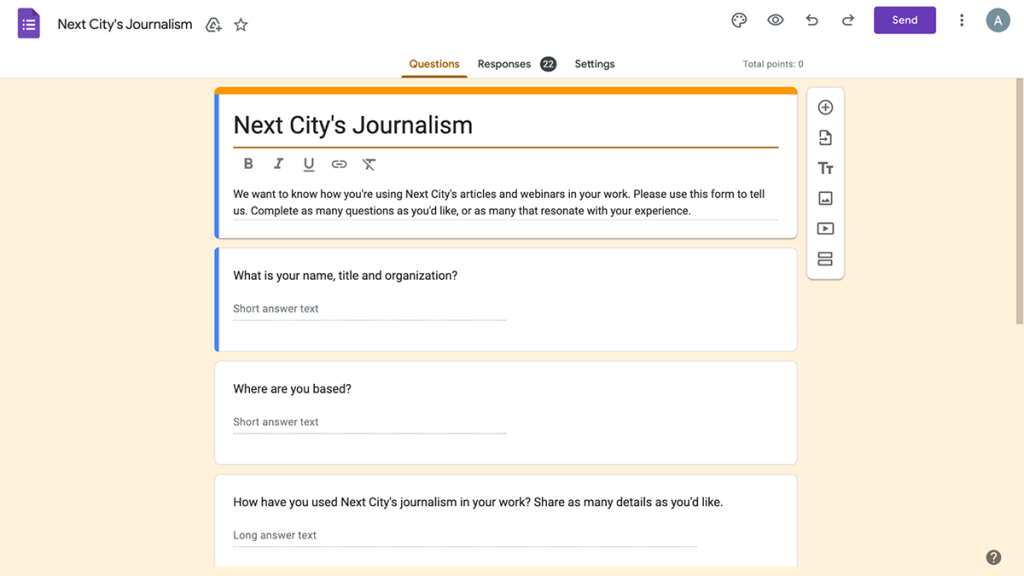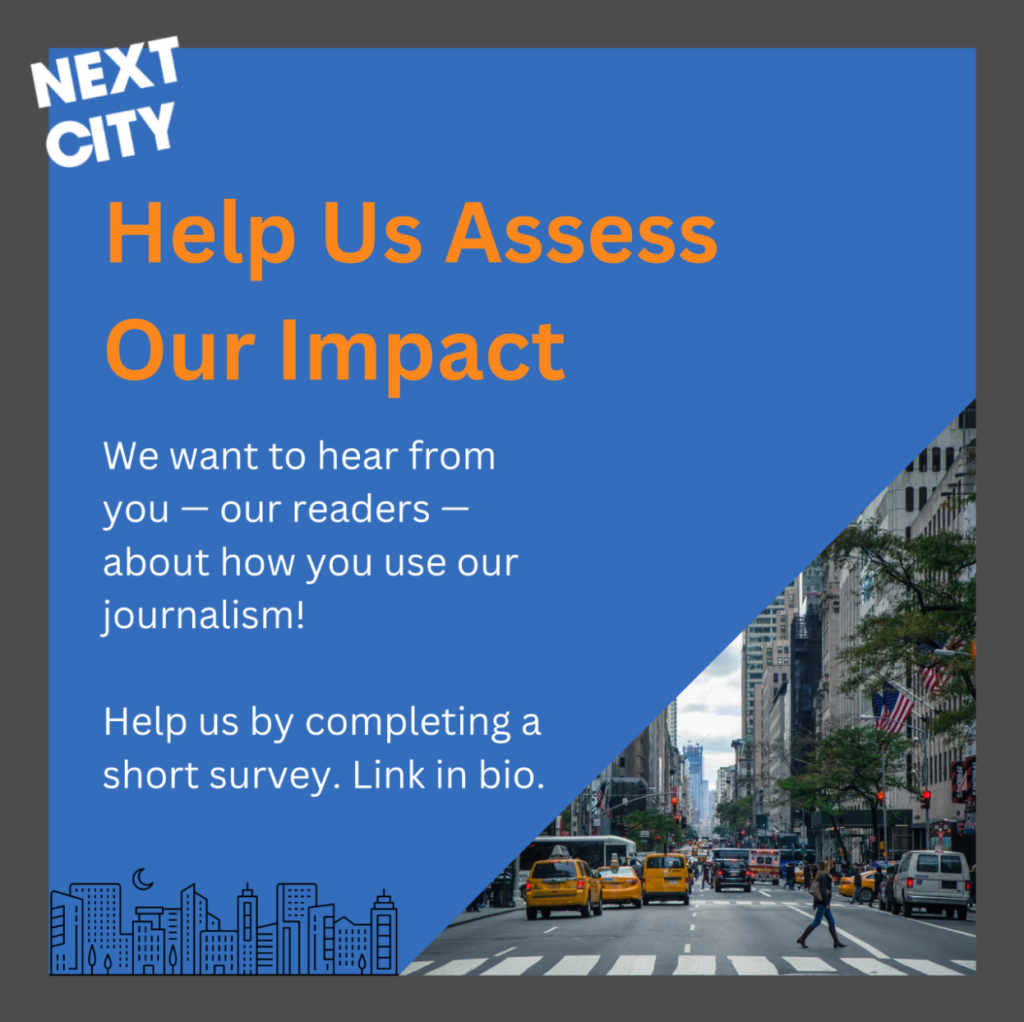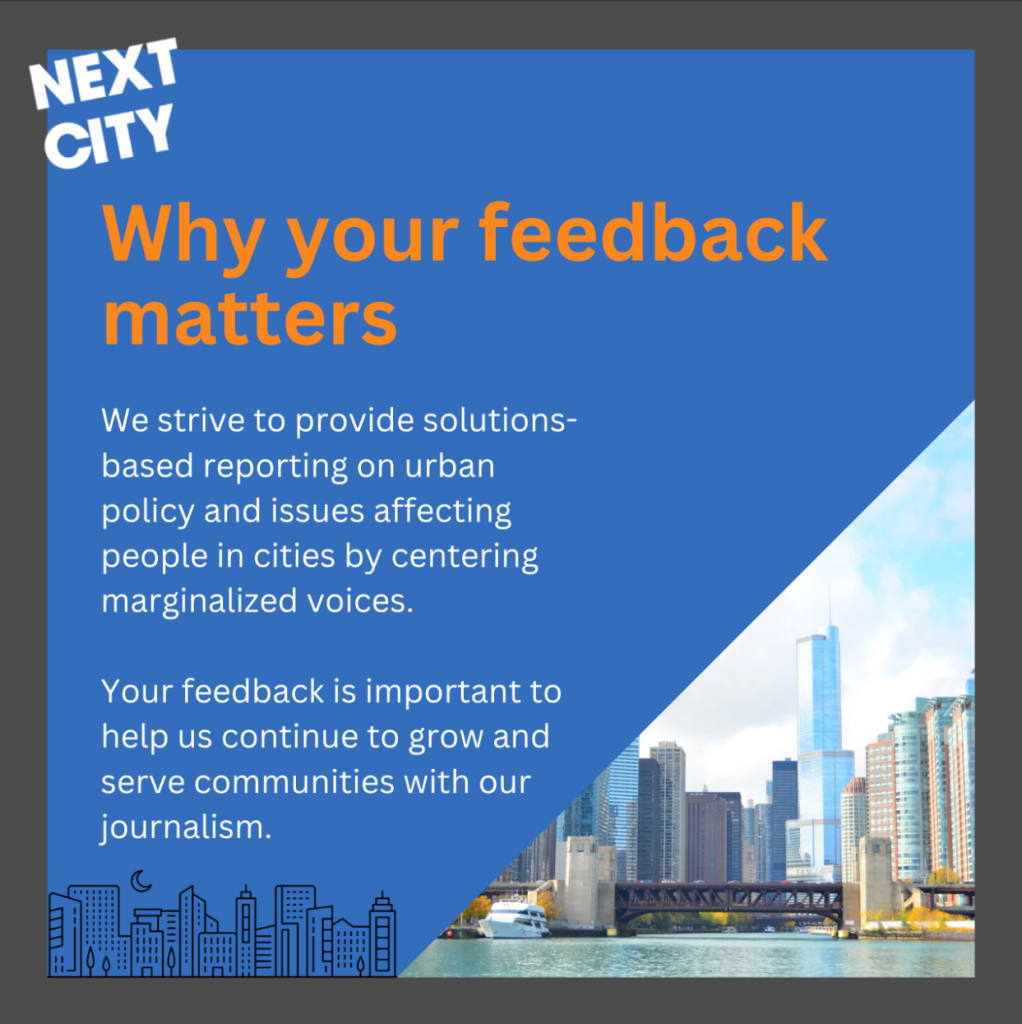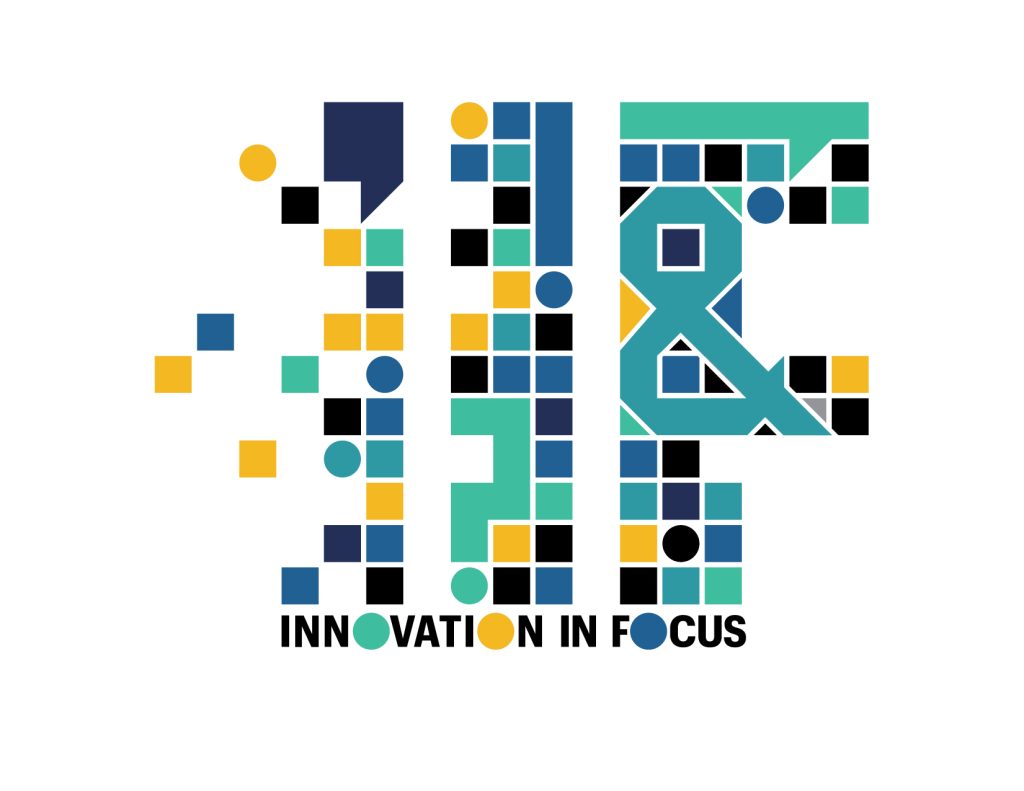
How Next City collected impact stories from readers
And impact takeaways from Borderless Magazine and Tradeoffs
Audrey Novinger is a 2024 RJI Student Innovation Fellow partnered with Next City. The RJI Student Fellows will be sharing their innovative work throughout the summer in Innovation in Focus.
Impact stories from readers can help newsrooms analyze and communicate their success with donors, improve their marketing efforts and reach their goals. As a media outlet seeking to inspire change in urban policy and other issues affecting marginalized people in cities, Next City wanted to better understand how its readers — many of whom are people working in city planning, architecture, transportation, finance, and more — are using its journalism.
Here is a closer look at our process:
Step 1: Take stock of current methods for collecting data and feedback
Next City’s 2020 reader survey found that 75% of its readers used Next City for their jobs, and nearly 90% were working toward greater racial equity in their fields. The Next City team wanted to collect stories detailing how their solutions-based reporting had influenced legal actions, community organizing, and readers’ professional and personal lives. These goals became our starting point for collecting impact data.
Next City has been using Survey Monkey to collect readers’ demographic information and coverage interest areas. But the team wanted to use Google Forms to collect impact information. The first Google Form we sent out only received one reply from an individual who had not used the organization’s journalism for their work yet.
Step 2: Give readers agency over which questions to answer
To improve the story collection process, we started by adding more questions to the Google Form to gather additional information on how readers were engaging with Next City’s journalism.
The existing form included these three questions:
- What is your name, title and organization?
- How have you used Next City’s journalism in your work? Share as many details as you’d like.
- If you’re open to the Next City team reaching out for more details, please share your email address below.
The updated form included additional questions to help us understand our readers’ motivation for using Next City’s journalism based on their location and personal interests. We also wanted to ask how Next City could improve.
Added questions:
- Where are you based?
- How have you used Next City’s journalism in your personal life? Share as many details as you’d like.
- In what ways can we improve our journalism to better serve you and your community?
Initially we did not receive many responses. However, when we unmarked any “required” fields (in case responders did not feel like answering certain questions) our responses drastically increased from 1 to 22 in barely a week.
Most of the responses were detailed and provided examples of how Next City’s reporting had helped readers in their work. We also gained a better understanding of where our readers were from; many who responded were based in cities across the U.S. Overall, respondents answered all or most of the questions when they were given the choice.
STEP 3: Share with a wider audience
We shared the form on each of Next City’s social media platforms and in the weekly Next City newsletter.

The design for each of the social accounts was clear and concise and included information from the 2020 reader survey about how many people used Next City in their jobs and how many were working toward greater racial equity in their fields. We used Canva to design posts for Instagram, Facebook, LinkedIn, X, and the newsletter.

Step 4: Learn from other newsrooms’ efforts
To see how other nonprofits conduct reader surveys and impact reports, we reached out to several newsrooms. We asked them about how they define “impact” and what tools (i.e. apps, digital programs, and other resources) they used to organize and collect information.
From Borderless Magazine, we spoke with Operations Associate Sarah Luyengi. Borderless is a nonprofit, nonpartisan, multilingual newsroom that focuses on dismantling harmful, racist narratives of immigrants that appear in mainstream media. Borderless typically publishes 2-3 stories each week on a variety of topics such as environmental racism, immigration policy, arts and culture, and more.
Here are the highlights of what they shared:
- Organization and communication: Borderless conducts weekly and quarterly staff meetings to stay organized and keep track of impact-related material. Luyengi said Borderless’s small team makes meeting in person much easier than if they were a larger organization. The team also uses Slack and WhatsApp to communicate, and they save impact materials in folders in the cloud.
- Sourcing for impact: Borderless centers immigrant voices in every step of its journalism as interviewees, reporters, and staff. Staff members’ stories are often included as anecdotes in impact reports.
- Defining impact: Community plays an important role in how Borderless defines its impact. Because the news outlet produces content by and for immigrant communities in Chicago, its impact often reflects the stories and wins of its sources and reporters. Borderless’s 2022 impact report features everything from important legal changes that resulted from the organization’s reporting to honors and awards for their work and reader responses. The report also includes reporter profiles and highlights from interviews.
- Tracking impact: Luyengi said Borderless asks donors why they are donating through their webpage, and these responses can be included in impact reports. She said Borderless tracks qualitative and quantitative data, but they also feature quotes from donors and readers in their annual reports to show the human impact of their work.
- Impact example: Followers on Borderless’s social media accounts often comment about how they have used Borderless’s journalism. Luyengi said quotes from followers can be included in impact reports upon receiving a follower’s permission.
- Challenges: As a very small team, Luyengi said Borderless does not have the same resources as many larger news outlets. To make sure all of the work gets done, she said the team meets quarterly to keep tabs on impact data and hold team members accountable.
- Advice for other nonprofit newsrooms: Be consistent when engaging with your community. Luyengi said it is important that news organizations are genuine in their efforts to be inclusive and that they avoid highlighting diversity just for the sake of it.
We also interviewed Director of Marketing and Audience Kathryn Dugal from Tradeoffs. Through rigorous reporting, Tradeoffs helps professionals, policymakers, and consumers understand complex issues in healthcare.
- Organization and communication: Dugal said she sets Google Alerts to keep track of where Tradeoffs’ work appears.
- Sourcing for impact: Tradeoffs sends an annual survey to its email list via Survey Monkey and has an audience survey link on its website. Dugal said the team previously used Google Forms, but they received feedback from audience members who were concerned about their privacy when their email appeared at the top of the form. Tradeoffs learns as much as it can about its target audience by conducting informal research and interviews. This year, Tradeoffs has interviewed around 20 to 25 audience members to better align its products with its audience’s interests. In the process, Dugal said they gained unexpected insights into how people used Tradeoff’s journalism.
- Defining impact: Tradeoffs uses several criteria to determine impact. Dugal said Tradeoffs highlights when its reporting has led to policy changes in healthcare or has been picked up by other news outlets. Because Tradeoffs publishes more explainer pieces than investigative stories, Dugal said Tradeoffs prioritizes collecting responses that describe how audiences use Tradeoffs’s journalism in their lives. Tradeoff’s 2023 Impact Report outlines how its focus on real people’s stories has changed the field of healthcare.
- Tracking impact: In addition to tracking changes in legislation that result from Tradeoff’s journalism, Dugal said reader responses can provide useful information about how Tradeoffs is making a difference. Policy changes can take time, but reader responses can be acquired more quickly.
- Impact example: Tradeoffs published a story in 2023 about people who are dually eligible for Medicare and Medicaid. Dugal said the team didn’t see the story’s larger scale impact until about 8 months later when a bipartisan press conference quoted their work. She said the team wasn’t aware that their work was being used, but luckily someone from Tradeoffs was tuned into the conference and recognized the citation of their work.
- Challenges: As a small organization with less than 10 full-time employees, Dugal said focusing on impact becomes a larger part of each team member’s job. Setting Google Alerts to stay up-to-date on how Tradeoff’s work is used helps the team keep track of impact examples they might otherwise miss.
- Advice for other nonprofit newsrooms: Impact is not one-size-fits-all, especially when you’re not doing investigative journalism. Dugal said the topics an organization covers, its location, and more will factor into how news teams define impact. Additionally, Dugal recommends that teams flag and save anything that might be considered impact-worthy. It is better to have more material to work with than not enough, and you can always go back and select the best examples.
Step 5: Analyze data, advice and establish next steps
Next City gained multiple helpful reader responses from its survey, and the remaining tasks involve organizing and presenting the data and continuing to collect impact stories.
We brainstormed several possibilities for further action, which will continue to be refined in the following months. The impact stories will be shared in presentations to funders, audiences at conferences, partners, and potentially as marketing materials with the consent of respondents.
Here are our planned next steps:
- Continue to share the survey in the newsletter and on social media. Based on other nonprofit newsroom data collection methods, sending an annual survey via email newsletters and social media feels appropriate. A quarterly survey might be useful to help get the impact project off the ground in the first year. Additionally, a link to the survey on Next City’s website will allow audience members to share and re-access the form.
- Follow up with respondents and gain permission to share their stories and quotes with funders and other partners. We may also ask for headshots to include with the quotes.
- Develop a document that makes it easy for Next City’s fundraising team to pull stories from.
- Consider ways to collect qualitative data and analyze trends in both types of data.
- Continue to learn from other nonprofit media outlets and research additional methods for collecting stories.

Sign up for the Innovation in Focus Newsletter to get our articles, tips, guides and more in your inbox each month!
Cite this article
Novinger, Audrey (2024, July 17). How Next City collected impact stories from readers. Reynolds Journalism Institute. Retrieved from: https://rjionline.org/news/how-next-city-collected-impact-stories-from-readers/
